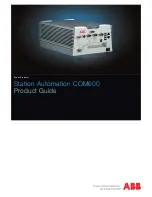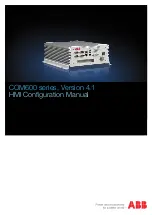
iPECS-LIK
Feature Description & Operation Manual
Issue 6.0d1
178
2.70 SYSTEM NETWORKING
2.70.1 Centralized Control TNET
Description
In a Centralized Control TNET (Transparent Network), a central MFIM controls all remote
modules and terminals providing transparent networked access to all the features and functions
of the central iPECS as well as the resources connected to the iPECS.
Where the remote device is not directly reachable by the iPECS, RTP packets must be relayed
through a local VoIP channel. A remote device may not be reachable when WAN access for
the device is through a firewall or NAPT server. In this case, the remote devices are assigned a
zone to manage RTP traffic between other devices connected in the TNET. The zone defines
when an individual device requires use of the local VoIP channel. Zones are used to identify
other group characteristics as outlined in section Remote Device Zone Management.
Remote sites may include an MFIM operating in the local mode as a live back up to the remote
central system. Under normal circumstances, the central MFIM controls remote devices
(gateway Modules and terminals) including any local MFIM VoIP channels. However, should
the WAN connection between the central system and the remote devices fail, the local MFIM
will assume the call server responsibility for the local devices. The local MFIM thus provides
local survivability and, based on configuration, may provide PSTN back-up service (Fail-over)
for internal calls that normally route over the WAN.
Under certain operating conditions, this equipment cannot be relied upon to make emergency
calls. Alternative arrangements should be made for access to the emergency services.
Operation
System
Operation of Centralized Network is automatic when configured & defined
Conditions
1. In a Centralized Network, the maximum number of channels available is the
maximum number of channels supported by the central MFIM.
2. In TNET, Centralized Miscellaneous functions (Relay support, MOH, BGM, Alarms
and External Page) are not supported but, all terminals in the TNET can make and
receive pages.
3. When NAPT or other firewall functions are implemented, packet relay for RTP
packets is required. Packet relay requires VoIP channels for each simultaneous
call desired.
4. The local MFIM will take over operation of registered devices if the central
controlling MFIM does not respond to three consecutive poll attempts over a 10-
second period. The central MFIM will gain control automatically upon return of the
WAN connection.
5. iPECS can be installed behind a NAPT however, Fixed Nat
– port forwarding is
required for the host to be reachable by remote devices.
6. Up to 50 local MFIMs can operate in local mode as part of a TNET if central MFIM is
MFIM1200. Otherwise, Up to 15 local MFIMs can operate in local mode as part of
Summary of Contents for iPECS-LIK
Page 138: ...iPECS LIK Feature Description Operation Manual Issue 6 0d1 125 Hardware VOIM8 or VOIM24 ...
Page 150: ...iPECS LIK Feature Description Operation Manual Issue 6 0d1 137 Hardware VSF and or VMIM ...
Page 175: ...iPECS LIK Feature Description Operation Manual Issue 6 0d1 162 Related Features Hardware ...
Page 257: ...iPECS LIK Feature Description Operation Manual Issue 6 0d1 244 2 81 ...
Page 326: ...iPECS LIK Feature Description Operation Manual Issue 6 0d1 313 1 CLI is 01234567890123456 ...
Page 350: ...iPECS LIK Feature Description Operation Manual Issue 6 0d1 337 Hardware iPECS Phone ...
Page 361: ...iPECS LIK Feature Description Operation Manual Issue 6 0d1 348 Hardware iPECS Phone ...
Page 370: ...iPECS LIK Feature Description Operation Manual Issue 6 0d1 357 Hardware iPECS Phone w Display ...
Page 424: ...iPECS LIK Feature Description Operation Manual Issue 6 0d1 411 Hardware ...
















































